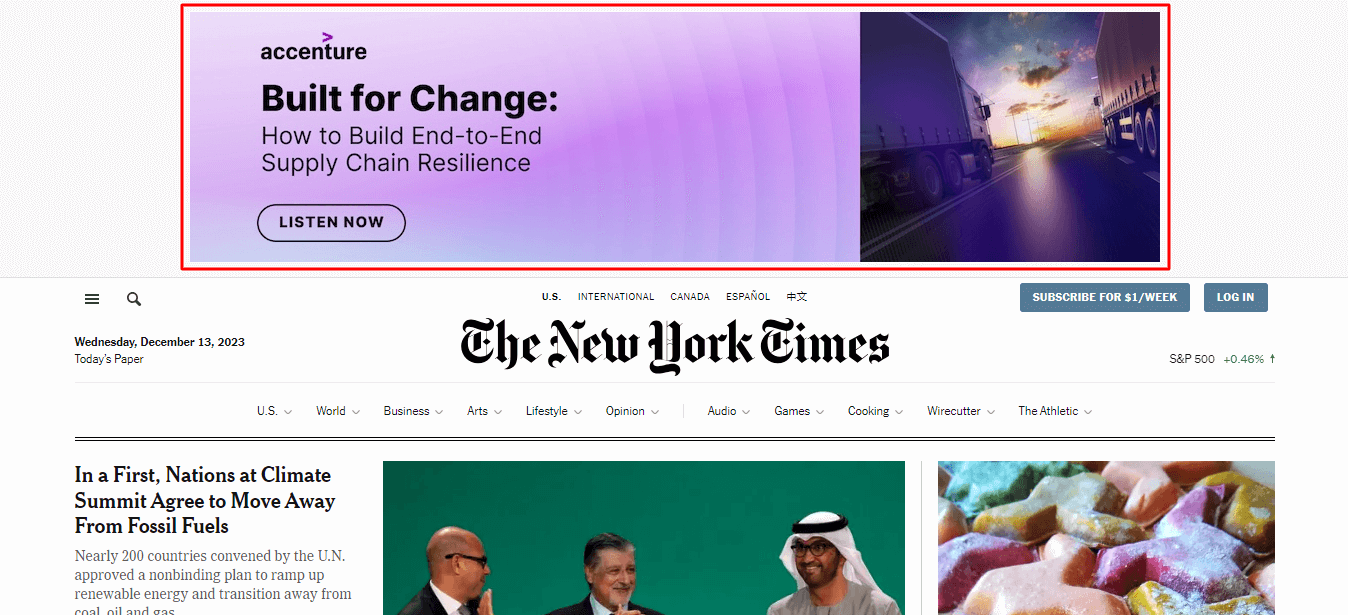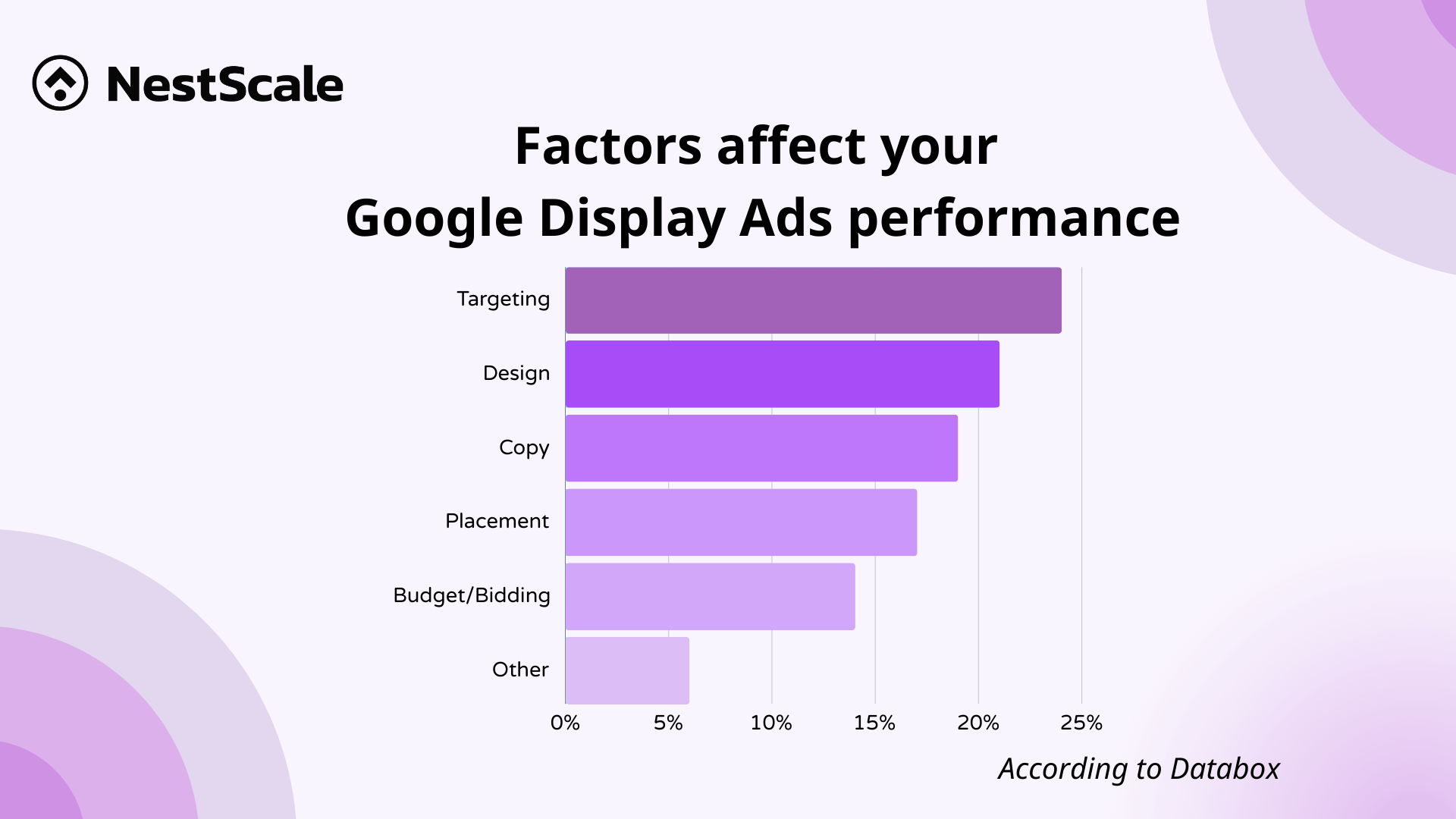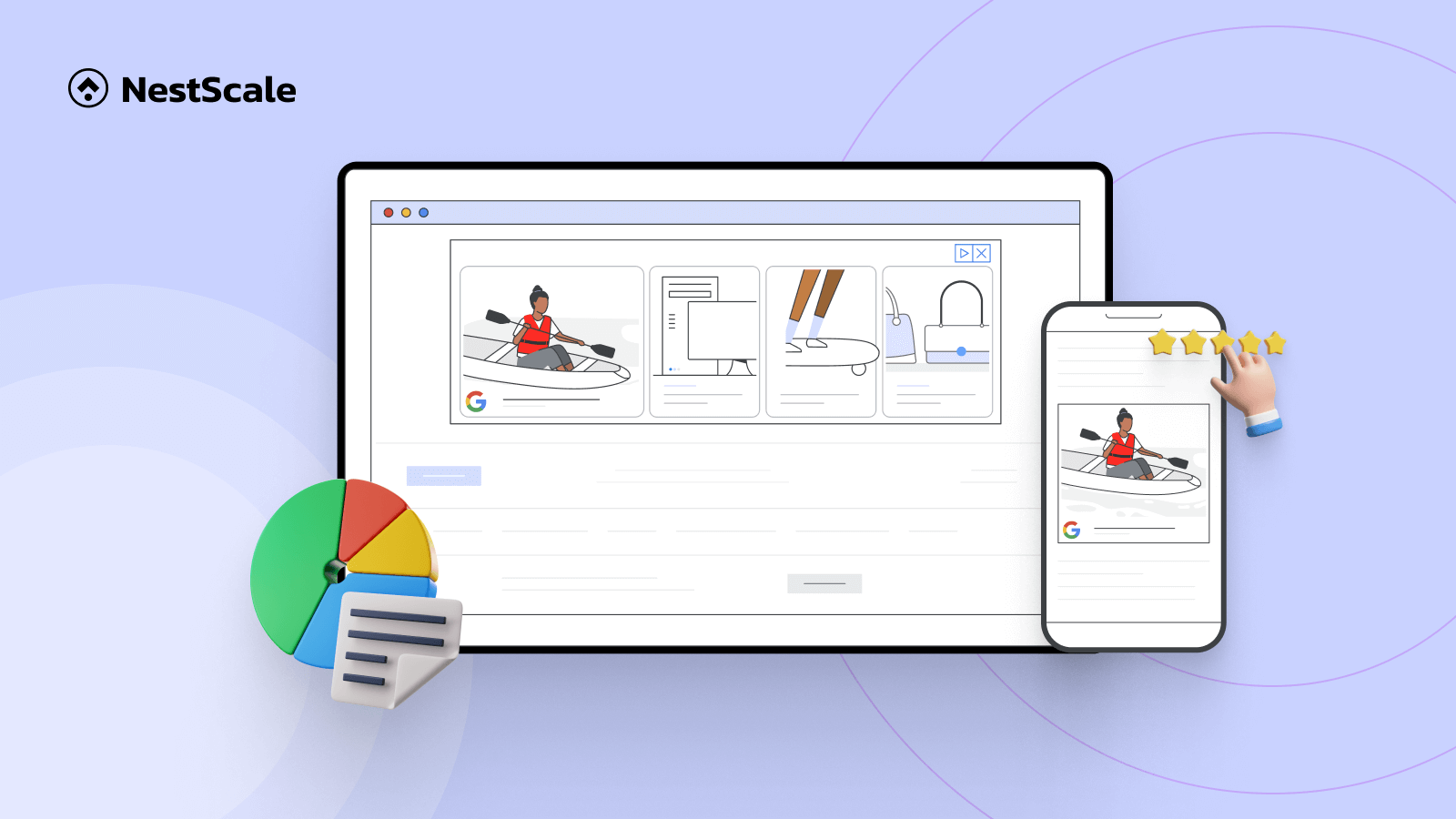Google Display Ads offers a powerful avenue for advertisers to reach customers across a vast network of websites, apps, and popular Google platforms like YouTube and Gmail. But how can you transform these placements into magnets for clicks and potential leads? Here are 8 powerful tactics to optimize your Display Ads for maximum impact.
What is Google Display ads?
Google Display Ads are a form of online advertising that allows businesses to place their ads on websites, apps, and videos across the Google Display Network (GDN). GDN is a massive network of millions of websites, reaching over 90% of internet users worldwide.
To raise brand awareness, Google Display Ads are one of the best ways to do this. Display ads can help you get your brand in front of potential customers, even if they are not actively searching for your product or service. Contrary to popular belief, Google Display Ads aren’t just for big brands. They can work wonders for smaller businesses as well. Display ads can also be used in the initial stage of launching a new product or service to engage and drive potential customers.

Factors affect your Google Display ads performance
To effectively optimize your Google Display Ads, it’s crucial to grasp the key factors influencing their performance and ultimate outcomes. These factors span the entire spectrum of your ads, encompassing visual elements like design and content, as well as strategic components such as targeting, placement, and budget/bidding. From the collective experience of numerous advertisers, the pivotal aspects impacting ads the most are targeting, design, and content. Therefore, to ensure successful optimization, meticulous attention to these elements is paramount.

Google aids in the optimization process by offering recommendations through the Google Ads Optimization Score, a metric that gauges the performance of your ads and provides insights into areas for improvement. It is important to note that these metrics typically require approximately 7 days to generate meaningful insights. To set your ads on a trajectory for immediate success, you can kickstart the optimization journey by implementing eight key tips for your Google Display ads.
How to optimize Google Display ads?
If you’re unsure where to begin optimizing your Display ads campaign, don’t worry – we’re here to assist you. Below, we’ve outlined 8 tips you can apply to improve your Display ads performance. So, let’s dive in together – get ready to explore with us!
Reach the right customers at the right time
You can’t show your ads about your beefsteak restaurant for the ones who are vegetarian. So that’s why choosing the right customer is vital for your ads campaign. Make sure your Google Display Network advertisements are targeted to people who stand a good chance of being interested in and able to benefit from whatever it is that you’re selling.
To improve your Google Display Ads Optimization and choose the right time to show your ads, here are some actions you can do:
- Optimized targeting: Use optimized targeting to reach out to high-conversion customers within your campaign goals. Optimized targeting, a privacy-conscious tool, helps you identify new and relevant audiences most likely to convert within your campaign goals. By exceeding manual segmentation, it uncovers hidden potential customer segments, boosting your campaign’s performance.
- Add your optional signals: In Display ads campaigns, an optional signal is a piece of data that can be used to further target your ads and improve their performance. Add optional signals like audience segments or keywords to enhance the targeting process.
Make a high-quality impression for your ads shown
After choosing the right target audiences, if you want them to be curious about your product and click on your ads, the first and vital thing is that you need to have engaging and attractive ads. To create a high-conversion ad, we’ll give you some tactics to note:
Matching design with your brand
Your ad’s visual elements, especially color, should both represent your brand and boost conversions. You might not think but this is a simple and easy way to optimize your display ads. Opting for a consistent brand theme color instead of a diverse palette builds recognition and strengthens your brand’s overall image in customers’ minds, regardless of the individual color’s temperature or vibrancy.
Take GreenClean for example, all ads use the brand’s signature green and white colors, symbolizing nature and purity. These display ads showcase close-up shots of GreenClean products, highlighting the natural ingredients and avoiding harsh chemical imagery.
Align your ads with the landing page
Again, it’s consistency. But it’s not just about the images and fonts. Aligning also means being consistent in the message you’re conveying and the feeling you’re giving to your readers on your landing page. This is important so that they don’t feel like they’ve been tricked after clicking on your display ads. Consistency, though not a guaranteed conversion driver, builds trust and professionalism, laying the groundwork for long-term brand loyalty and customer relationships.

Add creative assets to your Display ads
Eye-catching visuals and compelling headlines instantly grab viewers’ attention and set your ad apart from the clutter. This initial engagement is vital for sparking interest and driving further action. Some tips you should keep in mind to utilize these assets:
- Diverse formats: Experiment with various ad formats beyond static images like GIFs, videos, and interactive elements. This adds diversity and engagement, increasing the impact of your campaign.
- Craft compelling headlines and CTAs: Headlines should be clear, concise, and grab attention. CTAs should be direct, action-oriented, and easy to understand.
- Focus on clarity and simplicity: Avoid cluttered designs and complex messaging. Prioritize readability and ensure your message is easy to grasp at a glance.

Utilize the power of Smart bidding
Another way for your Google Display Ads Optimization is using smart bidding. This type of bidding might not work directly for your display ads. However, it will save you time and money due to Google’s automation. For more details, here are the reasons why using Smart Bidding will optimize your Display Ads:
- Dynamic Bidding: Smart Bidding takes the guesswork out of bidding. It analyzes an extensive set of signals, including device, location, time of day, and user context, to calculate the optimal bid for each individual auction in real-time.
- Superior Performance: By tailoring bids to individual user profiles and contexts, Smart Bidding can lead to significantly better results compared to manual bidding. This translates to increased efficiency, improved return on investment, and ultimately, higher conversion rates for your campaigns.
Do remarketing with your ads
Remarketing is a PPC powerhouse. By repeatedly exposing your message to users who have expressed interest in your company, you focus your resources on high-intent leads with a strong potential for conversion. For Google Display Ads Optimization, this tactic will capture the potential of past website visitors with display retargeting, reaching them across the web with ads tailored to their previous interactions and maximizing your chances of converting them into customers.
And don’t forget that user intent varies, even within the same network. Since users who’ve interacted with your website or YouTube videos already know your brand, create ad messages that specifically appeal to them and their existing knowledge of your offerings. The “Exclude audience” feature allows you to sharply differentiate your remarketing campaigns from your general awareness campaigns.
Use responsive ads
Responsive display ads offer unparalleled reach for both services and products, accessing placements standard formats can’t. Take YouTube search results or native ads – these premium positions require responsive ad formats to be included in your campaign. Google also highlights the superior reach of responsive display ads compared to other formats. This increased exposure, combined with either maintained or reduced CPMs, translates to significant engagement gains.
By utilizing a diverse set of variations, you can achieve optimal performance for your Responsive Display ads. Responsive ads also allow you to create multiple headlines and descriptions. Try to come up with all five headline and description variation fields to maximize your messaging variety.
Custom intent audiences
Another way to improve your Google Display Ads optimization is custom intent audiences. Imagine showing your ads only to people who are actively seeking what you offer. That’s the power of custom audiences in online advertising. By targeting individuals based on their specific interests and online behaviors, you can ensure your valuable ads reach the most receptive audience, maximizing your ROI.
One effective way to target customer intent audiences is to create a custom audience based on competitors’ websites. You can create more engagement with Google Display Ads by targeting users who’ve visited relevant industry websites. Show your ads across the internet to this custom audience. Their prior website visits demonstrate their interest, leading to a higher click-through rate for your campaign.
Measure attribution
Leverage the power of attribution reports, models, and data-driven approaches to gain a deeper understanding of how your Display campaigns contribute to conversions.
Here’s why:
- Attribution reports and models: These tools shed light on the complex customer journey, revealing the individual touchpoints that influence conversion decisions. Analyzing these insights helps you optimize your campaigns to maximize their impact.
- Data-driven attribution: This cutting-edge approach utilizes your own account data to pinpoint the specific ads that drive conversions. This is particularly valuable for campaigns with indirect conversion paths, where the customer journey involves multiple interactions before reaching a conversion.
By incorporating these valuable assessments into your campaign analysis, you can gain a deeper understanding of your Display campaign performance and optimize it for greater effectiveness.
Track your conversions
When optimizing your Display Ads, include engaged-view conversions (EVCs) and view-through conversions (VTCs) alongside your standard click-based conversions.
Why? These metrics reveal valuable insights into the influence of your Display campaigns beyond direct clicks. They capture instances where users view your ad without clicking but later convert it to your website.

Many users may require multiple exposures to your brand before converting. By including EVCs and VTCs, you gain valuable insights into how your display ads are contributing to these longer customer journeys. These 2 types will help you to track the metrics easily because they can be readily accessed within the Conversions column of your campaign reports, allowing you to seamlessly integrate them into your optimization process.
NestAds will be your perfect stop if you are looking for a third-party app to get deeper conversions about your ads. Because NestAds goes beyond basic tracking by offering a powerful attribution feature. This allows you to understand the full customer journey and see how each ad interaction contributes to a conversion. You can track not only clicks but also impressions and view-through conversions, providing a more complete picture of your campaign performance.
So, what’re you waiting for? Let’s optimize your Display Ads and maximize your conversion rate with NestAds!






















































